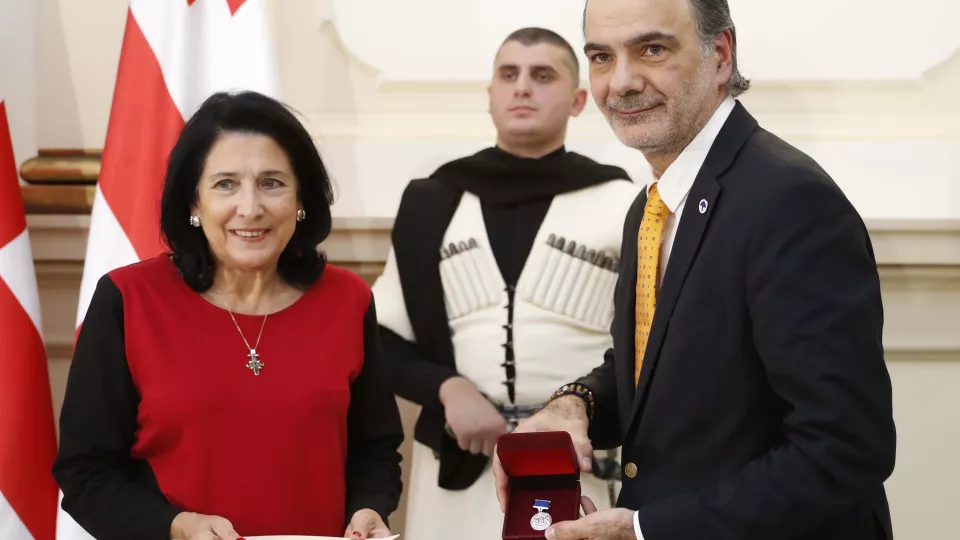Zaal Kokaia, Professor within the Department of Clinical Sciences and Director of Lund Stem Cell Center, has been awarded Georgia’s most prestigious scientific prize - the National Prize in Science.
The award comes as a result of his outstanding contribution to world class scientific research and was presented to Prof. Kokaia at a ceremony in the Presidential Palace, Tbilisi, by the Georgian President Salome Zurabishvili. The goal of Zaal’s research is to understand how the brain regenerates following damage, primarily from stroke, by connecting basic and clinical studies.
A stroke occurs when a blood vessel in the brain is either blocked or ruptures, resulting in the formation of a brain lesion, in which a cluster of neurons die due to lack of blood flow.
The effect of a stroke depends on several factors, from the location of the lesion to how much brain tissue is affected, and includes problems with movement and speech, sensory impairment and memory loss.
In a seminal paper published in 2002 in the journal Nature Medicine Zaal, together with Olle Lindvall- a Professor at the Department of Clinical Sciences, described the incredible ability of the brain to adapt following damage caused by stroke. They observed that upon stroke, adult stem cells residing in the brain, which normally produce olfactory interneurons critical for the sense of smell, began to migrate to the stroke lesion and replace the lost neurons. This was the first study to demonstrate adult neurogenesis in the forebrain and highlighted the capacity of adult brain and stem cells to adapt to their new environment in the stroke damaged brain.
“This is one of the many ways the brain deals with its new damaged environment, but there are many other factors, including inflammation, activation of resident immune cells and infiltration of blood monocytes which all co-ordinate to deal with the damage” explains Zaal.
Unfortunately, the majority of stroke patients are elderly and their capacity for neural regeneration is quite low, as is their ability to establish new connections and make new synapses in the brain. In recent years, the Kokaia group’s research focus has been on understanding how to improve the functional recovery in stroke patients using stem cells. This includes reprogramming human pluripotent stem cells derived from skin into new neurons, which can be introduced into the stroke damaged brain to enhancing the capacity of the brain to re-wire itself and to promote regeneration. Zaal and his group have observed that when transplanted into rodents these new neurons can both send and receive the connections from the host brain.
“If our objectives are achieved, this work will have major therapeutic implications for patients with neurodegenerative disorders such as stroke, a disease that currently represents the leading causes of disability worldwide and of a huge economical and societal burden, set only to increase with the growing aging population” concludes Zaal.


